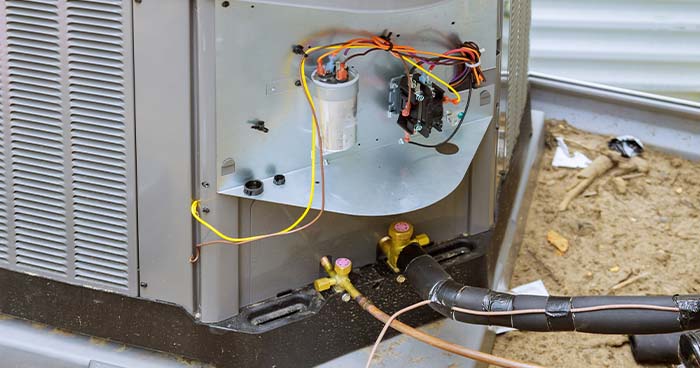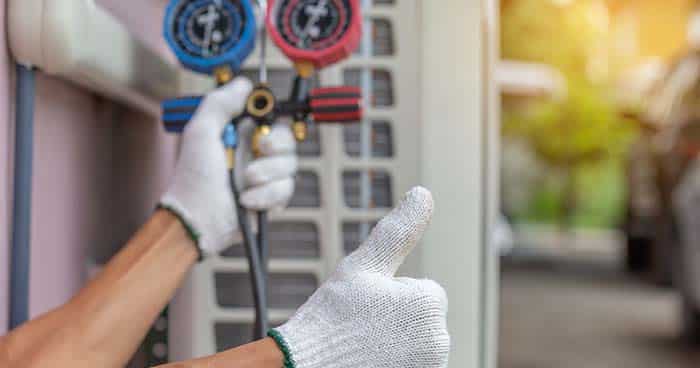Don’t forget, fall is just around the corner. If you have a subpar or older HVAC system, consider how a heat pump can help you with your home’s needs.
If you’re in Los Angeles, you may be wondering if heat pumps work in the city – or California, for that matter. Fortunately, California’s moderate climate is ideal for a heat pump, to the point that the state actually prefers them over HVAC systems like furnaces for the low carbon emissions.
What is a Heat Pump?
Despite the name, a heat pump is not simply used for heating the home – they can also be used for cooling in the summer.

How Does a Heat Pump Work?
A heat pump consists of two major components: an outdoor unit and an indoor air handler unit. Both the indoor and outdoor units contain various sub-components:
Outdoor unit: The outdoor unit has a coil and fan. The coil operates as a condenser in cooling mode or an evaporator in heating mode. The fan blows air over the coil for the heat exchange.


- Refrigerant: The refrigerant is a substance that absorbs and rejects heat as it circulates within the heat pump.
- Compressor: The compressor pressurizes the refrigerant and moves it through the system.
- Reversing valve: The part of the heat pump system that reverses the flow of refrigerant is the reversing valve. This allows the system to operate in both directions and switch between heating and cooling.
- Expansion valve: The expansion valve is a metering device that regulates the flow of the refrigerant as it passes through the system to reduce the pressure and temperature of the refrigerant.
A heat pump transfers heat energy that naturally wants to move from one area with higher temperatures and high pressure to areas with lower temperatures and less pressure. The heat pump relies on this natural occurrence to put heat in contact with the cool, low-pressure environment to transfer.
Advantages of a Heat Pump in Los Angeles
Heat pumps for HVAC systems work well in Southern California because they’re similar to an air conditioning system. Like an air conditioner, a heat pump uses the circulation of the refrigerant by compressor to pump heat from one place to another.

Heat pumps are a great choice for Los Angeles weather because they’re powerful and energy efficient. They absorb heat from the outside to provide heating during cool weather, so they can suffer from poor efficiency in climates with extremely low temperatures. Cold temperatures aren’t an issue in Southern California, so the heat pump will always have a steady supply of outdoor heat to bring inside.
Disadvantages of Heat Pump in Los Angeles
A heat pump isn’t ideal for every situation, however. If you have a natural gas-powered furnace that heats your home, it’s better to use the furnace and air conditioner instead of converting to a heat pump. Buying a heat pump for just cooling mode isn’t a cost-effective choice.

Are you considering a heat pump for your Los Angeles home? Contact the pros

